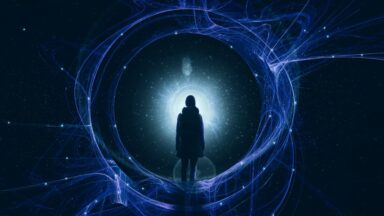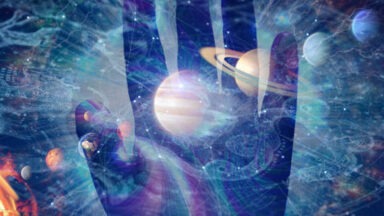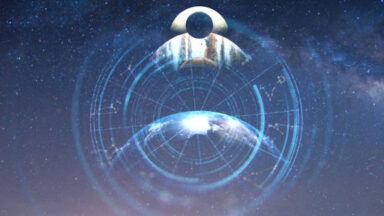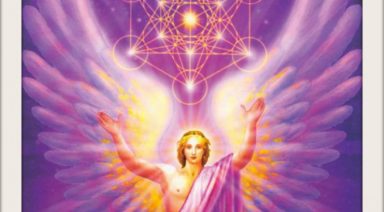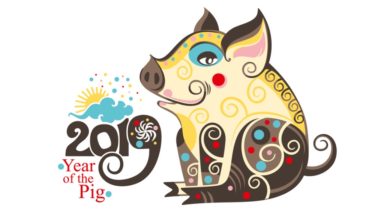Shared Death Experiences; Supernatural Events Around the Dying

New research is shedding light on Shared Death Experiences; when the living accompany the dying on their journey into what may lie beyond.
While there has been a good deal of attention paid to the Near-Death Experience, very little is known by the general public about the Shared Death Experience (SDE).
A new research survey is the first of its kind to explore at length this fascinating phenomenon.
William Peters is the founder of the Shared Crossing Project, which is dedicated to educating people about the transformative experiences of the dying. He is also the author of the recently published book “At Heaven’s Door.”
“A Shared Death Experience occurs when somebody dies and a loved one, caregiver, bystander expresses that they feel like they shared in the transition of the dying from this human life to a life beyond and into the initial stages of the afterlife,” Peters said. “There are a variety of ways to be an SDE experiencer, you can be at bedside; about one-third of our cases are from experiencers who are just at the bedside in the room when someone is dying. Two-thirds are remote, that means they’re not even at the bedside when someone is dying, they’re doing life somewhere oftentimes they’re sleeping and they find themselves drawn into an experience, the shared death experience, in which they’re sharing a variety of phenomena.”
Peters has interviewed hundreds of people about their experiences and estimates that up to a quarter of the world’s population may have had an SDE.
The Shared Crossing Research Initiative’s recent survey of SDE accounts brings forth the range of phenomena common to the experience.
“So the most common phenomena would be this: alteration in the time-space continuum in the room. So, all of a sudden if you’re with them or even if you’re remote, you get a little dizzy, you realize your world is getting a little warped. Then you might feel a pressure, a pull upon your chest. If you’re bedside you might see a spirit, the soul-spirit leaving the body. It can look like steam, smoke, or mist coming off of the body. You’ll notice the light is changing all around you. People 51 percent of the time report seeing the dying. They report seeing the dying moving on a journey, and there is often communication with them. But they are with this loved one, presumably because that’s what it is most of the time, witnessing this transition,” Peters said.
Some of the more fascinating accounts involve multiple people experiencing an SDE around the same death.
“This experience I’m going to share is from Amelia. Her son Tom was diagnosed with cancer at 10 years old, terminal,” Peters said. “And when Tom finally died, she was with him in his bed, and she saw a beautiful lady of light appear. So she handed her beloved son of 13 years old to this woman, spirit being, who was majestic and pulled Tom with her and let Amelia know, ‘I’ve got him.’ Right when this experience was going on, Amelia’s sister Charmaine, walked into the room. Charmaine described seeing Tom rise out of his bed and head upwards into another dimension, and she felt all this loving-kindness around. So they had two different SDEs was around the death of Tom, but very validating,” Can science explain these remarkable experiences? Peters gives us his take.”
“There is some energetic frequency — we’re all energetic — and I think as somebody’s dying, their frequency is changing as they drop their human body and begin to enter into another dimension. In this frequency, you can be drawn into it, and your frequency as a person will change. I think there’s a pull from this field to the experiencer,” Peters said.
One particularly meaningful aspect of the SDE is the profound effect it has on the experiencer.
“From our research, the after-effects are highly beneficial and profound. They have a sense that their deceased loved one is alive and well in a benevolent afterlife. They have a sense that they’re going to see their deceased loved one at some point. They have an alleviation in their own anxiety and fear of death.”
Peters has developed methods for training people to have these experiences, which involve connecting with a loved one whose death is imminent and then entering into a state of love, receptivity, and acceptance. To Peters, the implications of researching and educating people on the SDE are far-reaching.
“Really what we’re hoping is that these experiences can be embraced by our health care systems, by those of us who care for people, so that these experiences can transform how it is that we die. The SDE offers us an invitation to see death through this beautiful lens of what’s possible. A best death possible for all of us includes one with a shared death experience, for ourselves and for our loved ones,” Peters said.
March Equinox: Conversation between the I and AM by Matías De Stefano

ME: So, the March Equinox is the first portal of the year.
I AM: No.
ME: What do you mean no?
I AM: As always, we ask ourselves again: from whose perspective?
ME: Oh, sure…
I AM: We consider the March Equinox a strategic point to begin, according to the Northern Hemisphere, since spring begins on this specific day, while for the Southern Hemisphere it’s autumn. And spring is a good time to begin, since plants begin to sprout again, which means the time for sowing is near.
ME: Ah, that’s why the horoscope also starts on this day. Aries.
I AM: The moment of beginning, the baby who begins to grow, the goat that in ancient times was given as an offering to the Earth, returning wealth, winter nourishment to Mother Earth, so that she may give us life again. A Middle Eastern tradition that went from the field to the sky.
ME: So if everything is a cycle of constant transformation, it’s impossible to say when the beginning is.
I AM: Remember that the Year is an idea generated by cultures to record that a complete revolution around the sun has already been completed. But a revolution can be counted from any instant; that is, every second can be considered a new year. However, the seasonal points of movement or equinoxes of movement (Solstices and Equinoxes) are key to determining the ends and beginnings of something. Therefore, we have four moments in the year that can be considered a beginning and an end.
ME: Why do we use December 31st as the end of the year? And not some other date.
I AM: Because the December Solstice, around the 21st, represents the darkest day of the year, the longest night, and then, over the next three days, the return to longer days begins. Wouldn’t you consider this fundamental to a grand ending and a grand beginning?
ME: Totally.
SOY: The problem is that this also happens in June, but in the southern hemisphere.
ME: So that new year, below the equator, would begin on June 21st.
I AM: Exactly.
ME: And why isn’t it celebrated?
I AM: Because the only traditions that lived this reality were native peoples with culture, traditions, spiritual and artistic wealth, but without civilizations with expansive organizations. The Ona, Mapuche, Selknam, Anangu, Koori, Maori, Zulu, Xhosa, to mention just 5% of the southern inhabitants, and so many others, all of them were easily dominated by European traditions. The only important civilization in the southern world was the Quechua-Aymara empire, the famous Incas, who opened the doors to the conquerors. Thus, all traditions of time, of the way of understanding the world and its movement, came to be solely in the hands of the vision of the Semitic cultures of the Middle East. However, for other traditions, the important moments are not the solstices, but the equinoxes. In ancient Persia, for example, or Hindu and Indonesian traditions, they use the beginning of spring as the beginning of the year. However, other traditions celebrate it at different times. In turn, some are not even based on the cycle of the Solar Cross, but on the moons, like the Chinese calendar.
ME: And why are we going to start the task with the March Equinox and not with others?
I AM: Simply because it is the first portal moment after the Portal day of February 22nd, the moment of the Network activation, which exactly 2 years ago activated this planetary task that began 4 years ago in the same month, on February 2nd. The anniversary of the Network reconnection mission is the month of February, and therefore, for us, the planetary reconnection tasks will generally begin in March.
ME: Ah, I understand.
I AM: In Atlantean times, this day was called Hol-Phyr, which means Time, Cycle, or Stage of Fire. This was the name given to the period between the March equinox and the June solstice, as it was the time when we reconnected with our inner power, the divine spark that ignites our potential. The seed is synonymous with the spark, and therefore, fire was found in that tiny aspect that provided food, which gave us strength, life, and energy.
ME: Is that the intention of these following months?
I AM: This is the intention that we will all put together in this Cycle of Fire.
ME: How?
I AM: Let’s remember the mission and how to prepare for it, before stepping on the first of the 5 Nodes that we will activate on March 20th.
This article was published on Matías De Stefano’s blog, where he shares his reflections and teachings on planetary transformation processes and spiritual consciousness.
We now share the special meditation to accompany this March Equinox portal. This meditation is conducted in both Spanish and English simultaneously. We invite you to take a few minutes to connect with this experience and deepen into its energy.
In the series The Journey of Remembering, available on Gaia, Matías De Stefano shares his personal and spiritual journey since childhood, revealing memories of past lives and the deeper purpose of his mission on Earth. Through each episode, he guides the viewer on a journey of connection with the soul’s history, the planet’s energetic movements, and the awakening of collective consciousness.




